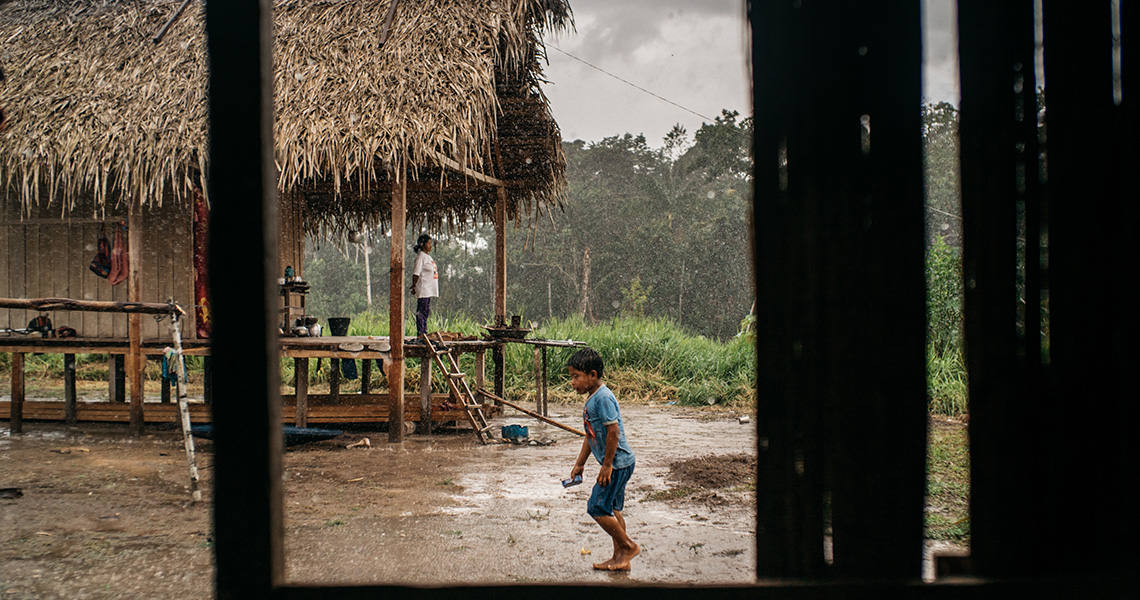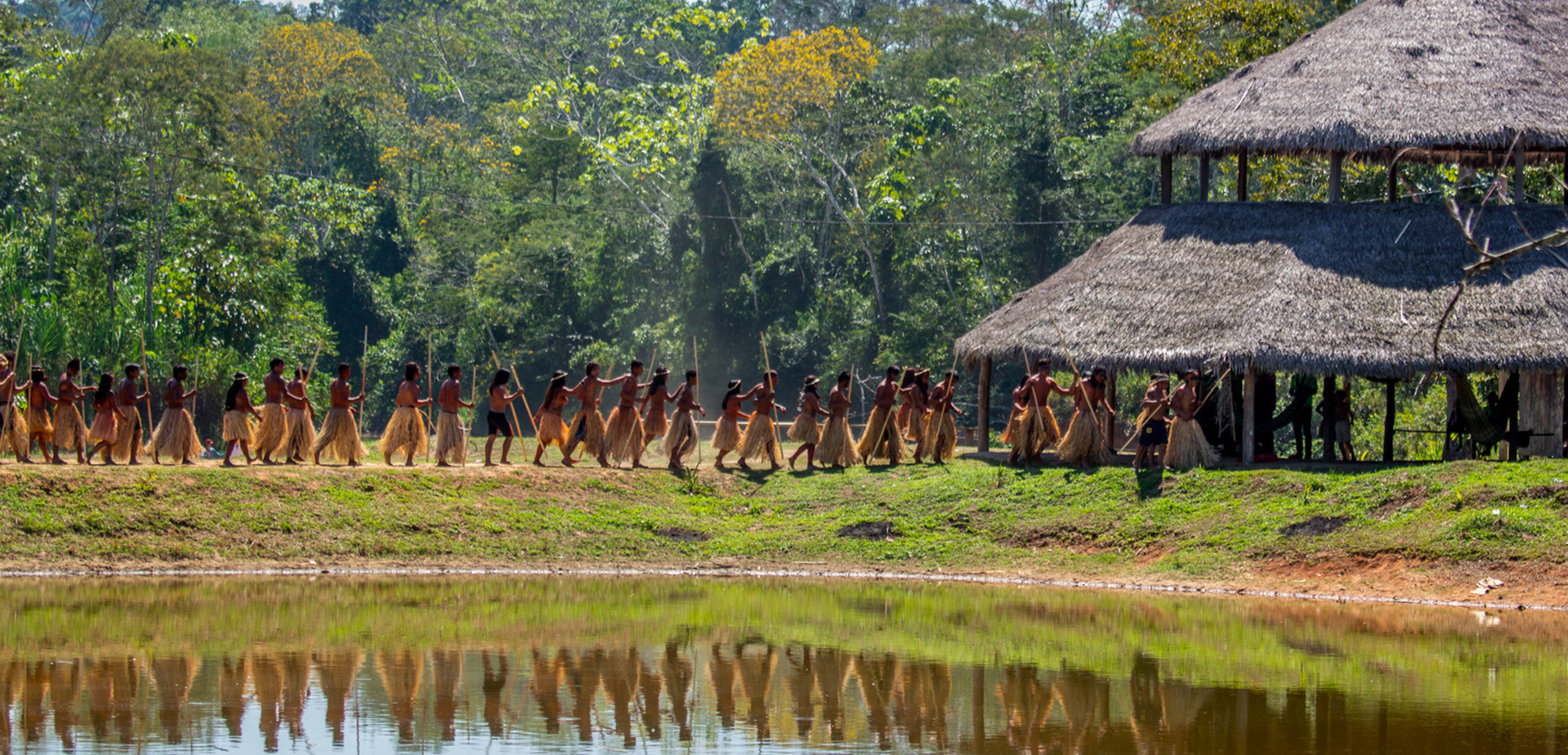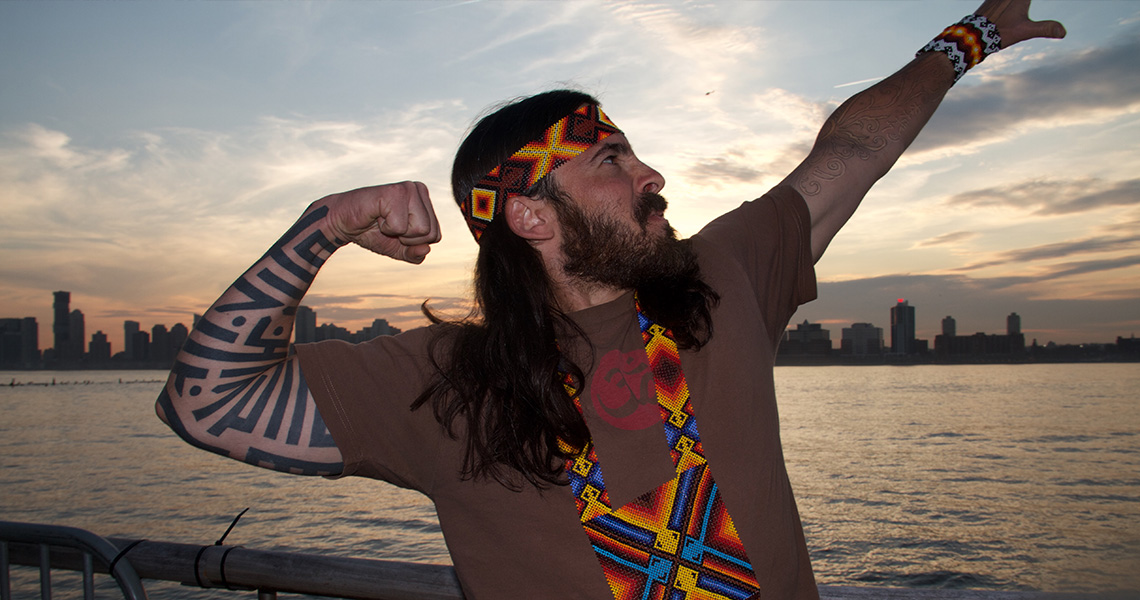This is a question I asked myself while on a 6-hour canoe ride, going deeper into the Amazon jungle than most would feel comfortable with… our destination? The Village of Mutum.Each of us making the days long journey to meet the Yawanawá tribe, certainly felt a strong call to venture into the heart of the forest of Acre, Brazil, but I still had no idea what we could possibly “do” other than enjoy the exotic location and experience a reconnection with Nature that can only be described as- deeply spiritual.
What could Indigenous Peoples, living in the middle of the forest, need money for anyway? It would take days to reach the nearest store. What’s the point of creating a “sustainable revenue stream” for a tribe? Don’t they just live off the forest, as they have for thousands of years, to feed, shelter and clothe themselves? Clearly I was missing something…
Finally arriving at the village, I was stunned by its beauty, the simplicity of life there, and the happiness of the people. After a warm welcome, we learned there was a devastating flood 6 months earlier that swept away the tribes’ thatch roof huts in 7 of 8 villages. Reparations required transporting men (and the few tools they owned) up and down the river to rebuild each village. The river is the only mode of transportation between villages and to the nearest outpost town, 6 hours away. No roads traverse the thick jungle- a true blessing.
Small propeller motors on a long stick, resembling a weed wacker, are held off the back of the canoe to ease travel along the long and winding river. Motors run on gas, not cheap for anyone in Brazil. And the efforts to rebuild basic housing structures, transporting men and tools to 7 villages would’ve cost too much in gasoline alone to accomplish, but fortunately, our beaded jewelry sales in partnership with the Women’s Cooperative of Mutum literally financed the massive effort.
During our stay, we also learned that the Yawanawá no longer subsist solely off the land. On the front lines of climate change, the tribe feels every subtle shift in the environment and its ecosystems. The flood is a prime example of how extreme weather events can devastate entire villages, and with little resources, the peoples of the forest are hit the hardest by the unconscious activities and consumption of cities, corporations, and governments thousands of miles away.
A nearly hundred-year-old tribal elder expressed to us that he’s never seen a flood of that magnitude in his lifetime, and that he sees this extreme weather as directly related to the devastating impact human activity is having on our planet, the waters, the air, and all the plant and animal species that depend on a balanced cycle of nature to survive.
Within months of returning home, the news is filled with tragedy; one of the largest forest fires ever recorded, burned half a million acres of the Arariboia Indigenous Reserve in the state of Maranhao. In an attempt to defend their ancestral lands from illegal logging, the Guajajara tribe began patrolling their borders. As retribution, the illegal loggers started a fire that quickly became uncontrollable, ironically, due to the extent of deforestation in the Amazon.
Transpiration, or the evaporation of water from plants, is a key component of the water cycle in the Amazon. With fewer trees to carry water from the soil, through its roots, up to its leaves and back to the atmosphere, less water is available to fall again as rain, creating droughts in some areas and extreme floods in others. Once the fire was started, the unusually dry Arariboia burned intensely for weeks before being contained.
Then came more news; one of the worst mining accidents in Brazilian history poisoned the Doce River. What was once the lifeblood of thousands of people became another tragic story of men crying in their canoes at the realization that no fish could survive the toxins now saturating the river’s waters, and they now had no means to feed their families.
I started to understand that the actions, lifestyles, and choices made by people in developed countries have literally stripped most indigenous tribes of their ability to live in isolation, solely from the bounty of Mother Nature. Climate change and the direct human impact of deforestation, mining, various “accidents”, etc. have forced indigenous peoples from the forest and into the towns, to buy rice, beans and other inexpensive dietary supplements to survive periods where fishing and hunting is simply not enough to feed the entire village.
The cold truth sunk in- indigenous peoples need money, for the same reasons the rest of us do, the only difference is that they did not choose this existence, they did not choose to live unbalanced from nature, but the imbalance has reached a level that its disrupting life for all species in the forest, including the human species.

 Explore More Posts
Explore More Posts





